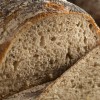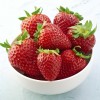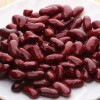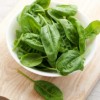 A healthy diet, along with exercise and medication, can help control diabetes and reduce the risk of complications. A healthy lifestyle also helps reduce the chances of developing diabetes for those who are at high risk. For a healthy diet, follow these tips. This 3-page fact sheet was written by Linda B. Bobroff, Jennifer Hillan, and Emily Minton, and published by the UF Department of Family Youth and Community Sciences, February 2015. (Photo:iStock/Thinkstock.com)
A healthy diet, along with exercise and medication, can help control diabetes and reduce the risk of complications. A healthy lifestyle also helps reduce the chances of developing diabetes for those who are at high risk. For a healthy diet, follow these tips. This 3-page fact sheet was written by Linda B. Bobroff, Jennifer Hillan, and Emily Minton, and published by the UF Department of Family Youth and Community Sciences, February 2015. (Photo:iStock/Thinkstock.com)
http://edis.ifas.ufl.edu/fy685
Tag: Healthy Eating for Elders series
Healthy Eating: Food Storage Guide
 If you don’t shop for groceries often, you may want to buy food that will last until your next trip to the store. The following storage guidelines for perishable foods will help you decide how much food to buy when you visit the grocery. Keep in mind that safe storage times depend on the condition of the food when you purchase it and your refrigerator temperature and humidity. Check foods often for any signs of spoilage. This 2-page fact sheet was written by Linda B. Bobroff and Jennifer Hillan, and published by the UF Department of Family Youth and Community Sciences, October 2013.
If you don’t shop for groceries often, you may want to buy food that will last until your next trip to the store. The following storage guidelines for perishable foods will help you decide how much food to buy when you visit the grocery. Keep in mind that safe storage times depend on the condition of the food when you purchase it and your refrigerator temperature and humidity. Check foods often for any signs of spoilage. This 2-page fact sheet was written by Linda B. Bobroff and Jennifer Hillan, and published by the UF Department of Family Youth and Community Sciences, October 2013.
http://edis.ifas.ufl.edu/fy699
Healthy Eating: Folate (FCS8567/FY066)
 Folate is one of the B vitamins. It is involved in the formation of DNA, the genetic material found in all cells of your body. Folate is an important nutrient for everyone. It is especially important for pregnant and nursing women, growing children, and older adults. Health problems may result if people do not get enough folate. This 2-page fact sheet was written by Linda B. Bobroff, and published by the UF Department of Family Youth and Community Sciences, October 2012.
Folate is one of the B vitamins. It is involved in the formation of DNA, the genetic material found in all cells of your body. Folate is an important nutrient for everyone. It is especially important for pregnant and nursing women, growing children, and older adults. Health problems may result if people do not get enough folate. This 2-page fact sheet was written by Linda B. Bobroff, and published by the UF Department of Family Youth and Community Sciences, October 2012.
http://edis.ifas.ufl.edu/fy066
Healthy Eating: Fluids (FCS8569/FY070)
 More than one-half of an adult human body weight is water. Water brings nutrients to the cells in our bodies and removes waste. Our bodies cannot function without an adequate water supply. This 2-page fact sheet was written by Linda B. Bobroff, Luisa Oliver-Cordero, and Emily Minton, and published by the UF Department of Family Youth and Community Sciences, 10. http://edis.ifas.ufl.edu/fy070
More than one-half of an adult human body weight is water. Water brings nutrients to the cells in our bodies and removes waste. Our bodies cannot function without an adequate water supply. This 2-page fact sheet was written by Linda B. Bobroff, Luisa Oliver-Cordero, and Emily Minton, and published by the UF Department of Family Youth and Community Sciences, 10. http://edis.ifas.ufl.edu/fy070
Healthy Eating: Folate (FCS8560/FY055)
 Folate is one of the B vitamins. Our bodies use folate to make new cells. Folate is especially important for women of childbearing age, pregnant and nursing women, growing children, and older people. If you don’t get enough folate in your diet, you could get anemia. You also could be at higher risk for heart disease, stroke, cancer, or memory problems. This 1-page large print fact sheet was written by Linda B. Bobroff, and published by the UF Department of Family Youth and Community Sciences, September 2012.
Folate is one of the B vitamins. Our bodies use folate to make new cells. Folate is especially important for women of childbearing age, pregnant and nursing women, growing children, and older people. If you don’t get enough folate in your diet, you could get anemia. You also could be at higher risk for heart disease, stroke, cancer, or memory problems. This 1-page large print fact sheet was written by Linda B. Bobroff, and published by the UF Department of Family Youth and Community Sciences, September 2012.
http://edis.ifas.ufl.edu/fy055
Alimentación Saludable: Sugerencias para ensaladas (FCS8696Span/FY703)
 ¡Las ensaladas son rápidas y fáciles de preparar y tienen infinidad de opciones! Las ensaladas son una comida práctica y saludable, acompáñelas con galletas integrales o con pan de trigo. Pruebe algunas de estas opciones en su próxima ensalada. This is the Spanish Language version of Healthy Eating: Salad Suggestions. Written by Jennifer Hillan and Emily Minton, and published by the UF Department of Family Youth and Community Sciences, May 2012.
¡Las ensaladas son rápidas y fáciles de preparar y tienen infinidad de opciones! Las ensaladas son una comida práctica y saludable, acompáñelas con galletas integrales o con pan de trigo. Pruebe algunas de estas opciones en su próxima ensalada. This is the Spanish Language version of Healthy Eating: Salad Suggestions. Written by Jennifer Hillan and Emily Minton, and published by the UF Department of Family Youth and Community Sciences, May 2012.
http://edis.ifas.ufl.edu/fy703
Healthy Eating: Salad Suggestions (FCS8696/FY702)
 Salads are quick and easy to make and have endless possibilities! Paired with whole grain crackers or whole wheat bread, salads make healthy and convenient meals. Try some of the ideas this 2-page fact sheet for your next salad. Written by Jennifer Hillan and Emily Minton, and published by the UF Department of Family Youth and Community Sciences, May 2012.
Salads are quick and easy to make and have endless possibilities! Paired with whole grain crackers or whole wheat bread, salads make healthy and convenient meals. Try some of the ideas this 2-page fact sheet for your next salad. Written by Jennifer Hillan and Emily Minton, and published by the UF Department of Family Youth and Community Sciences, May 2012.
http://edis.ifas.ufl.edu/fy702
Healthy Eating: Meals Without Cooking (FCS8934/FY1215)
 Enjoy a word search for the ingredients in this recipe for southwestern black bean salad. This 2-page fact sheet was written by Karla P. Shelnutt, and published by the UF Department of Family Youth and Community Sciences, May 2012.
Enjoy a word search for the ingredients in this recipe for southwestern black bean salad. This 2-page fact sheet was written by Karla P. Shelnutt, and published by the UF Department of Family Youth and Community Sciences, May 2012.
http://edis.ifas.ufl.edu/fy1215
Healthy Eating: Strategies for Eating Alone (FCS80016/FY1318)
 Eating alone may not always be our first choice, but there are many ways to make eating alone more enjoyable. Can you find the strategies in this word search? Written by Emily Minton, and published by the UF Department of Family Youth and Community Sciences, March 2012.
Eating alone may not always be our first choice, but there are many ways to make eating alone more enjoyable. Can you find the strategies in this word search? Written by Emily Minton, and published by the UF Department of Family Youth and Community Sciences, March 2012.
http://edis.ifas.ufl.edu/fy1318
Healthy Eating: No-Cook Recipes (FCS8693/FY694)
 Try these quick, easy recipes for balanced, healthy meals. No cooking required! This 2-page fact sheet was written by Jennifer Hillan and Emily Minton, and published by the UF Department of Family Youth and Community Sciences, May 2012.
Try these quick, easy recipes for balanced, healthy meals. No cooking required! This 2-page fact sheet was written by Jennifer Hillan and Emily Minton, and published by the UF Department of Family Youth and Community Sciences, May 2012.
http://edis.ifas.ufl.edu/fy694
Healthy Eating: Cooking for One (FCS80008/FY1302)
 You may think that cooking for one is a difficult task because most recipes are intended to serve four or more people. However, there are things you can do to make cooking for one easy and enjoyable. Inlcudes a table of measurements for reducing recipes. This 2-page fact sheet was written by Emily Minton, and published by the UF Department of Family Youth and Community Sciences, May 2012. http://edis.ifas.ufl.edu/fy1302
You may think that cooking for one is a difficult task because most recipes are intended to serve four or more people. However, there are things you can do to make cooking for one easy and enjoyable. Inlcudes a table of measurements for reducing recipes. This 2-page fact sheet was written by Emily Minton, and published by the UF Department of Family Youth and Community Sciences, May 2012. http://edis.ifas.ufl.edu/fy1302
Healthy Eating: The Importance of Eating (FCS80012/FY1310)
 Eating healthy is one of the key ingredients to staying healthy. Complete the fill-in-the-blank activity and reveal the hidden message! This 2-page handout was written by Emily Minton, and published by the UF Department of Family Youth and Community Sciences, May 2012.
Eating healthy is one of the key ingredients to staying healthy. Complete the fill-in-the-blank activity and reveal the hidden message! This 2-page handout was written by Emily Minton, and published by the UF Department of Family Youth and Community Sciences, May 2012.
http://edis.ifas.ufl.edu/fy1310
Healthy Eating: No-Cook Breakfast Ideas (FCS80014/FY1314)
 Sometimes we get up and don’t feel like cooking breakfast. For those days, here are a few no-cook breakfast ideas. Add a healthy beverage, such as a glass of low-fat milk or 100% fruit or vegetable juice for a complete meal. This 1-page fact sheet was written by Emily Minton, and published by the UF Department of Family Youth and Community Sciences, May 2012.
Sometimes we get up and don’t feel like cooking breakfast. For those days, here are a few no-cook breakfast ideas. Add a healthy beverage, such as a glass of low-fat milk or 100% fruit or vegetable juice for a complete meal. This 1-page fact sheet was written by Emily Minton, and published by the UF Department of Family Youth and Community Sciences, May 2012.
http://edis.ifas.ufl.edu/fy1314
Healthy Eating: Improving Your Convenience Foods (FCS80013/FY1312)
 Convenience foods offer many benefits, but they generally have a low nutritional quality compared to other foods. You can improve the nutritional quality by adding vegetables, fruit, and/or meat and meat alternatives. This 2-page fact sheet was written by Emily Minton, and published by the UF Department of Family Youth and Community Sciences, May 2012.
Convenience foods offer many benefits, but they generally have a low nutritional quality compared to other foods. You can improve the nutritional quality by adding vegetables, fruit, and/or meat and meat alternatives. This 2-page fact sheet was written by Emily Minton, and published by the UF Department of Family Youth and Community Sciences, May 2012.
http://edis.ifas.ufl.edu/fy1312
Healthy Eating: Scrambling for Healthy Beverages (FCS80015/FY1316)
 Unscramble the beverages below and determine which drinks you can have anytime and which ones you should limit! This 1-page fact sheet was written by Emily Minton, and published by the UF Department of Family Youth and Community Sciences, April 2012.
Unscramble the beverages below and determine which drinks you can have anytime and which ones you should limit! This 1-page fact sheet was written by Emily Minton, and published by the UF Department of Family Youth and Community Sciences, April 2012.
http://edis.ifas.ufl.edu/fy1316
Healthy Eating: Sixteen Savory Snacks (FCS8697/FY705)
 Tired of your regular snacks? Here are sixteen snack ideas that are easy to prepare and healthy too! Keep some of these choices handy for the next time you have the snacking urge. This 2-page fact sheet was written by Jennifer Hillan and Linda B. Bobroff, and published by the UF Department of Family Youth and Community Sciences, April 2012.
Tired of your regular snacks? Here are sixteen snack ideas that are easy to prepare and healthy too! Keep some of these choices handy for the next time you have the snacking urge. This 2-page fact sheet was written by Jennifer Hillan and Linda B. Bobroff, and published by the UF Department of Family Youth and Community Sciences, April 2012.
http://edis.ifas.ufl.edu/fy705
Healthy Eating: Drink to Your Health (FCS8694/FY696)
 Shakes and smoothies are a great and tasty way to incorporate more fruits and nutrients into your diet. This 2-page fact sheet was written by Jennifer Hillan and Emily Minton, and published by the UF Department of Family Youth and Community Sciences, March 2012.
Shakes and smoothies are a great and tasty way to incorporate more fruits and nutrients into your diet. This 2-page fact sheet was written by Jennifer Hillan and Emily Minton, and published by the UF Department of Family Youth and Community Sciences, March 2012.
http://edis.ifas.ufl.edu/fy696
Healthy Eating: Finding Good Health (FCS80010Span/FY1306)
 There are many different Nutritional Risk Factors that can affect our eating as we age, and it is important to fight these risk factors for better eating. In this word search, try to find these words that are important for a healthier lifestyle. This 1-page handout was written by Karla P. Shelnutt and published by the UF Department of Family Youth and Community Sciences, March 2012.
There are many different Nutritional Risk Factors that can affect our eating as we age, and it is important to fight these risk factors for better eating. In this word search, try to find these words that are important for a healthier lifestyle. This 1-page handout was written by Karla P. Shelnutt and published by the UF Department of Family Youth and Community Sciences, March 2012.
http://edis.ifas.ufl.edu/fy1306
Healthy Eating: Change Up Your Breakfast! (FCS80006/FY1298)
Are you tired of eating the same breakfast every day? Try a few of these ideas and maybe you’ll find a new favorite! This 2-page fact sheet was written by Emily Minton, and published by the UF Department of Family Youth and Community Sciences, March 2012. http://edis.ifas.ufl.edu/fy1298
Alimentación Saludable: Sugerencias para ensaladas (FCS8696Span/FY703)
 ¡Las ensaladas son rápidas y fáciles de preparar y tienen infinidad de opciones! Las ensaladas son una comida práctica y saludable, acompáñelas con galletas integrales o con pan de trigo. Pruebe algunas de estas opciones en su próxima ensalada. This is the Spanish Language version of Healthy Eating: Salad Suggestions. Written by Jennifer Hillan and Emily Minton, and published by the UF Department of Family Youth and Community Sciences, October 2011.
¡Las ensaladas son rápidas y fáciles de preparar y tienen infinidad de opciones! Las ensaladas son una comida práctica y saludable, acompáñelas con galletas integrales o con pan de trigo. Pruebe algunas de estas opciones en su próxima ensalada. This is the Spanish Language version of Healthy Eating: Salad Suggestions. Written by Jennifer Hillan and Emily Minton, and published by the UF Department of Family Youth and Community Sciences, October 2011.
http://edis.ifas.ufl.edu/fy703